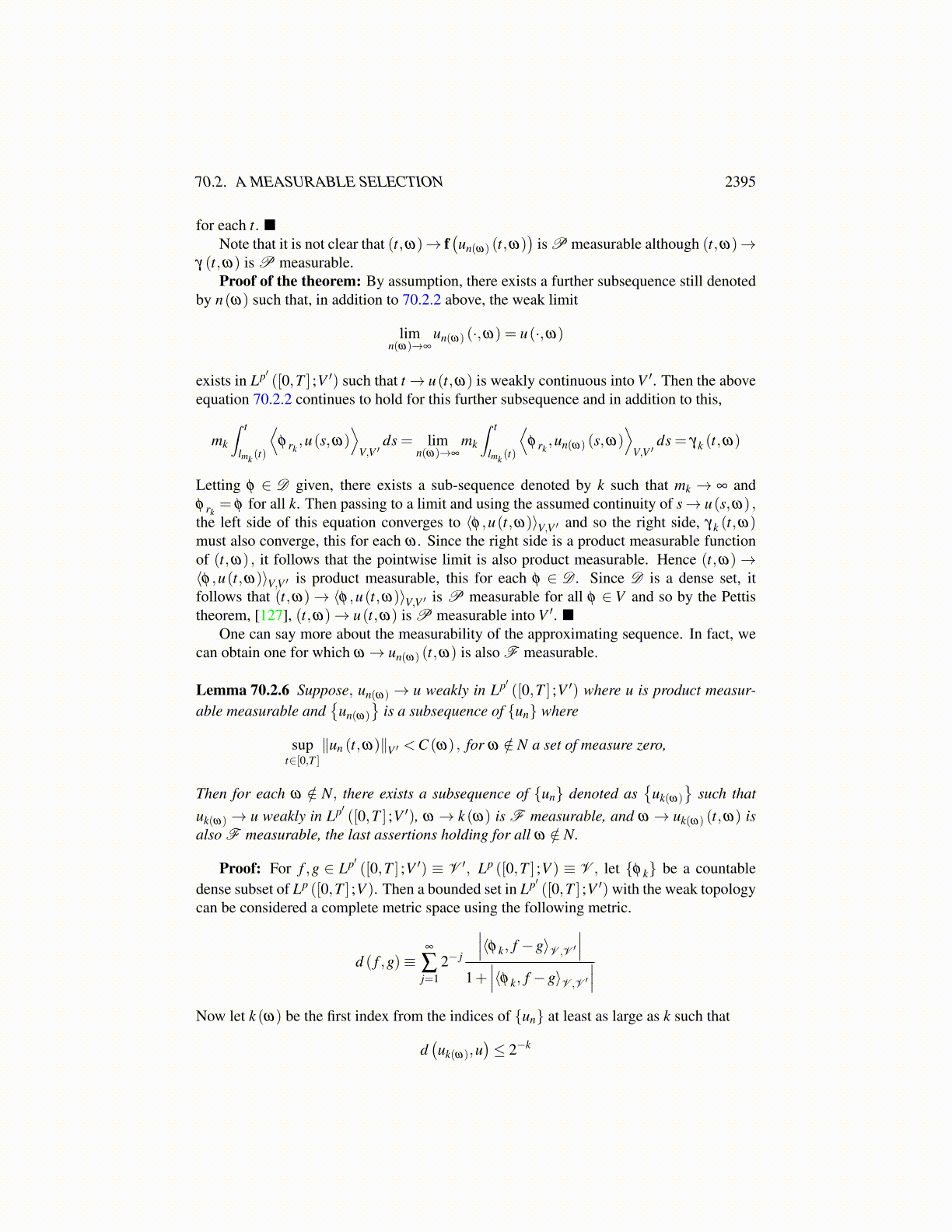
70.2. A MEASURABLE SELECTION 2395
Lemma 70.2.3 ω → Γn (ω) is a F measurable set valued map with values in X. If σ isa measurable selection, (σ (ω) ∈ Γn (ω) so σ = σ (·,ω) a continuous function. To havethis measurable would mean that σ
−1k (open) ∈F where the open set is in C ([0,T ]).) then
for each t, ω → σ (t,ω) is F measurable and (t,ω)→ σ (t,ω) is B ([0,T ])×F ≡Pmeasurable.
Proof: Let O be a basic open set in X . Thus O = ∏∞k=1 Ok where Ok is a proper open
set of C ([0,T ]) only for k ∈ {k1, · · · ,kr}. We need to consider whether
Γn− (O)≡ {ω : Γ
n (ω)∩O ̸= /0} ∈F .
Now Γn− (O) equals∩r
i=1
{ω : Γ
n (ω)ki∩Oki ̸= /0
}Thus we consider whether {
ω : Γn (ω)ki
∩Oki ̸= /0}∈F (70.2.1)
From the definition of Γn (ω) , this is equivalent to the condition that for some j ≥ n,
fki (u j (·,ω)) = (f(u j (·,ω)))ki∈ Oki
and so the above set in 70.2.1 is of the form
∪∞j=n
{ω : (f(u j (·,ω)))ki
∈ Oki
}Now ω → (f(u j (·,ω)))ki
is F measurable into C ([0,T ]) and so the above set is in F . Tosee this, let g ∈C ([0,T ]) and consider the inverse image of the ball B(g,r) ,{
ω :∥∥∥(f(u j (·,ω)))ki
−g∥∥∥
C([0,T ])< r}.
By continuity considerations,∥∥∥(f(u j (·,ω)))ki−g∥∥∥
C([0,T ])= sup
t∈Q∩[0,T ]
∣∣∣(f(u j (t,ω)))ki−g(t)
∣∣∣which is the sup of countably many F measurable functions. Thus it is F measurable.Since every open set is the countable union of such balls, it follows that the claim about Fmeasurability is valid. Thus Γn− (O) is F measurable whenever O is a basic open set.
Now X is a separable metric space and so every open set is a countable union of thesebasic sets. Let U be an open set in X and let U = ∪∞
l=1Ol where Ol is a basic open set asabove. Then
Γn− (U) = ∪∞
l=1Γn−(
Ol)∈F .
That there exists a measurable selection follows from the standard theory of measurablemulti-functions [10], [70]. This is proved in Theorem 70.1.2 above. For σ one of thesemeasurable selections, the evaluation at t is F measurable. Thus ω → σ (t,ω) is F mea-surable with values in R∞. Also t→ σ (t,ω) is continuous, and so it follows that in fact σ
is product measurable as claimed.